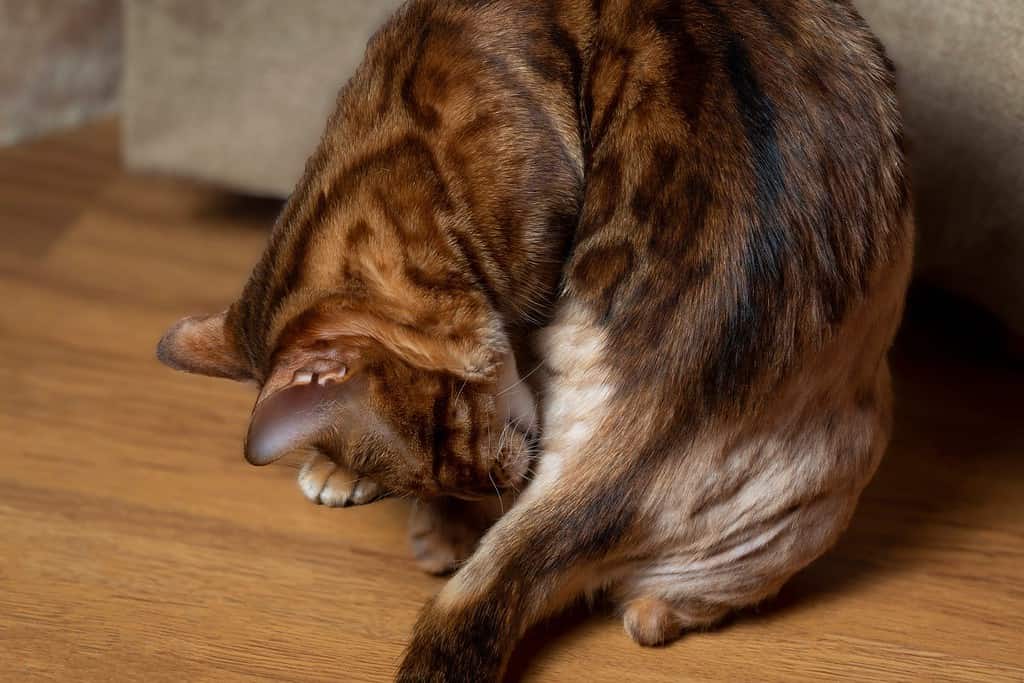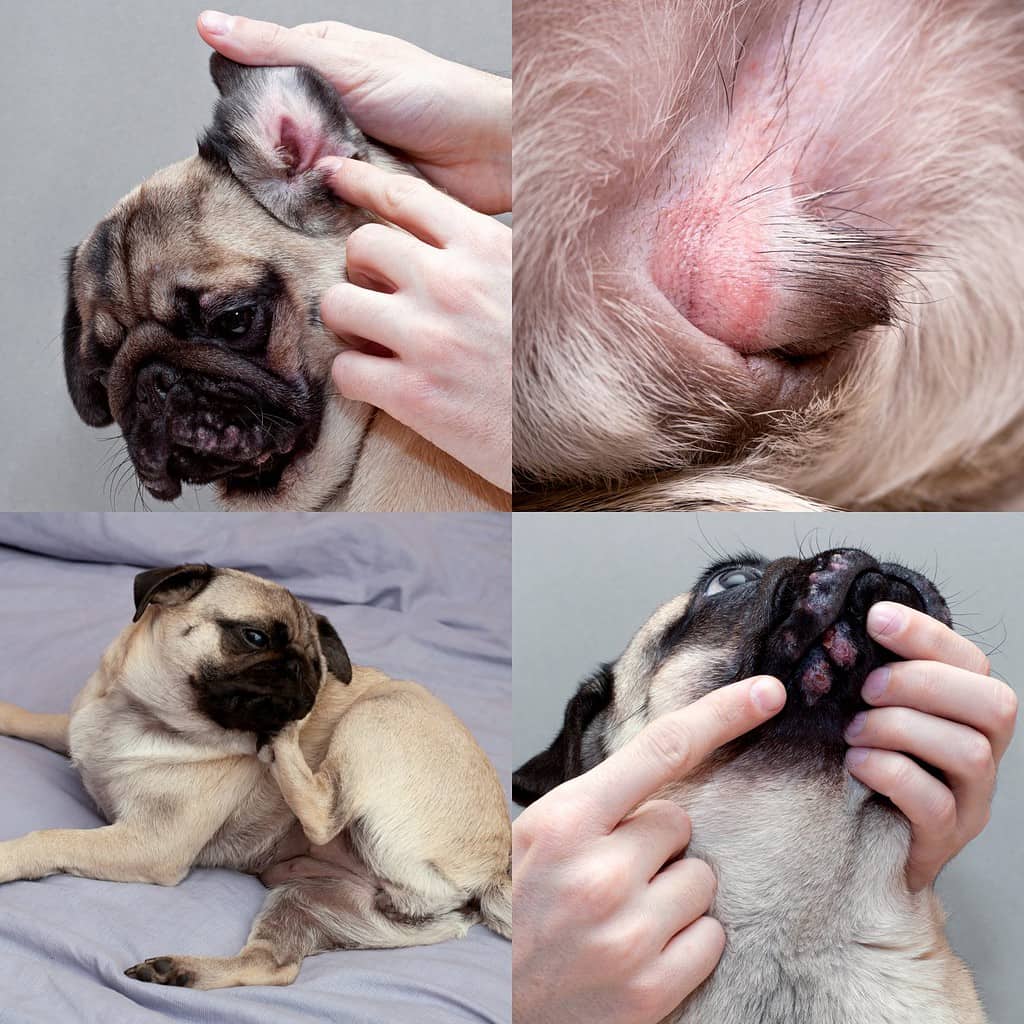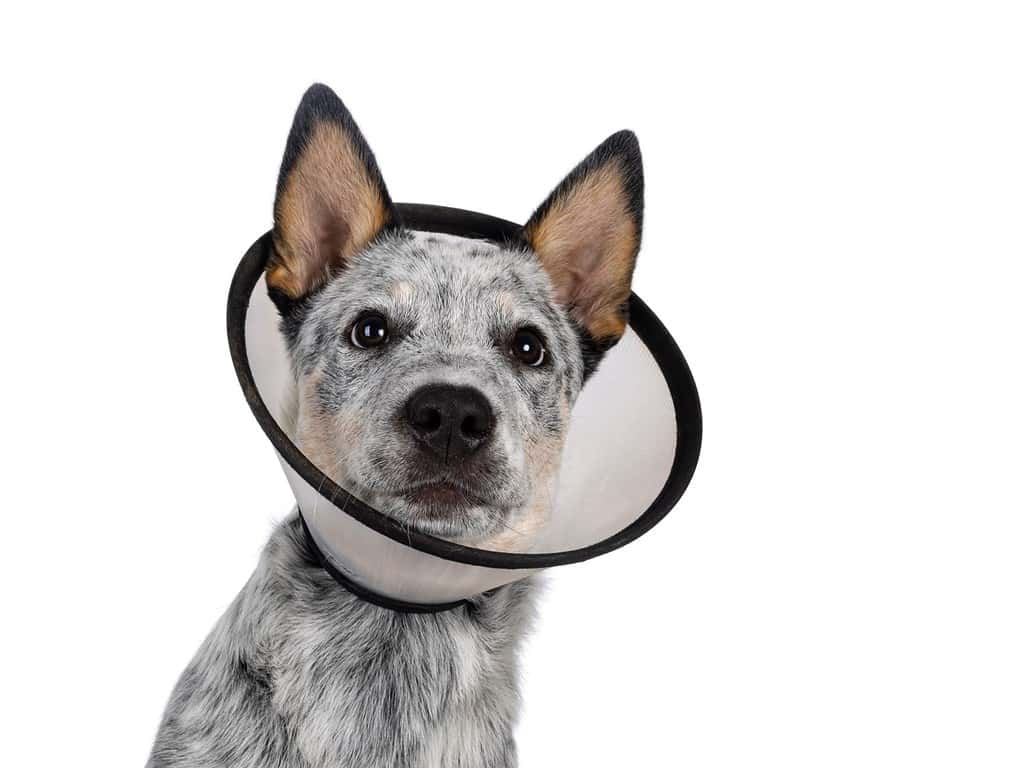Though most people find acne disgusting, it holds a strange fascination for a segment of the population. Dermatologists like Dr. Pimple Popper have become celebrities by posting acne removal videos online. Some people aren’t content just to watch the professionals, but look for opportunities to practice a little amateur dermatology on family, friends, and even pets – which is rarely a good idea! Dogs and cats are the non-humans that are most subject to acne. Read on to learn more about the causes, prevention, and proper treatment of this condition in your furry friends.
Acne in People

Acne in people often occurs on the face, back, and torso.
©YULIYA Shustik/Shutterstock.com
What is Acne?
Acne is a skin condition in which hair follicles become clogged with sebum (oil in the skin), dead skin cells, and the bacteria that feed on them. Some of the different types of acne that can form are whiteheads, blackheads, nodules, pustules, milia, steatocystomas, and others. Acne is often a problem for adolescents as a result of excess oil production in the skin due to hormonal changes, but people of any age can struggle with it. Usually, it occurs on the face, back, shoulders, or chest. Left untreated, acne can spread, become larger, take longer to heal, and leave scars and pitting in the skin when it eventually does resolve.
The Problem with Self-Treatment
A great many people find pimples unsightly and embarrassing so they pop them in hopes they will go away. This can be counterproductive though, as in non-sterile conditions they can spread bacteria and cause more outbreaks. Putting excessive pressure on the skin to pop a pimple can traumatize the surrounding skin, creating redness and swelling. There is also a great danger that squeezing a pimple can cause it to burst backward, into the body, rather than out of the skin. This can cause cellulitis or other infections that can even become life-threatening.
What Can a Dermatologist Do?

A dermatologist can recommend the best acne treatments and can screen for life-threatening conditions.
©Monkey Business Images/Shutterstock.com
Though it may not be necessary in mild cases, seeing a dermatologist can make acne treatment more effective. They can recommend changes in lifestyle, grooming, and medications for prevention and to clear up outbreaks. Salicylic acid, retinol, and benzoyl peroxide are effective over-the-counter treatments, but a dermatologist can also prescribe oral antibiotics, steroids, and other medications for severe cases. Removing a large lesion or cyst may require the use of a local anesthetic and stitches to prevent excessive pain and minimize scarring. They may use chemical peels or laser treatments to smooth the skin and pitted scars. And perhaps most importantly, they can identify possible cancers or other serious conditions that may be mistaken for ordinary acne.
Common Skin Problems in Dogs and Cats

This Bengal cat is suffering from alopecia. He is over-grooming and licking the hair off his legs.
©Azovsky/Shutterstock.com
Dogs and cats can suffer from a range of dermatological conditions. Here are a few examples:
- Allergic reactions to foods, pollen, or chemicals such as shampoos.
- Hot spots are red, irritated patches of skin that can result from the animal scratching, licking, or biting itself.
- Bacterial or fungal infections like MRSA or yeast infections.
- Parasites like fleas, ticks, mites, or ringworms can cause allergic reactions and excessive scratching. Mites can also burrow into the skin and cause mange.
- Seborrhea is a condition where the skin becomes oily and flaky.
These conditions are best treated under a veterinarian’s care. Treatment can involve changes to diet, the frequency of bathing and soaps used, keeping the fur and especially the inside of the ears well-groomed, and topical or oral medications.
Acne in Dogs and Cats

The most common location for acne on cats and dogs is the chin.
©Yekatseryna Netuk/Shutterstock.com
Where Do Pets Get Acne Outbreaks?
Any animal can get acne, but cats and dogs seem especially prone to it. It typically develops in middle age rather than adolescence in animals. As in people, animal acne often forms when a hair follicle becomes plugged. The chin, lips, and muzzle are common dog acne locations. Breeds that develop protective elbow calluses also sometimes develop blackheads there.
Why Do Pets Get Acne?
Anxiety, an unbalanced diet, or a change of environment may all contribute to pet acne. Pets may develop chin acne from contact sensitivity to plastic feeding dishes. Putting clothes on an animal can also irritate its hair follicles and cause overheating. Overweight animals, breeds that have deep folds in their skin, and long-haired animals with matting hair can also be more susceptible to a range of skin problems. Certain breeds are more prone to skin issues than others, so do your research before you adopt a pet so you will know what to look out for.
Prevention and Treatment of Pet Acne

Pay attention to signs of redness, scratching, or missing hair.
©Yekatseryna Netuk/Shutterstock.com
So how do you prevent and treat acne in dogs and cats? Here are a few pointers from the pros:
- Replace plastic feeding dishes with ceramic or metal ones, and keep them clean.
- Brush the area gently can help separate the hair and remove loose skin and oil.
- Use medicated shampoos specially formulated for use on animals, but don’t bathe too often as this can dry out the skin. Give a short-haired dog or a cat a bath every 4-6 weeks and a long-haired dog every 4-12 weeks.
- You can apply a warm compress to acne outbreaks to help draw the infection to the surface and speed healing.
- Do not use any products on your animals that are intended for humans unless approved by your veterinarian.
- Some products you can ask your vet about to treat your animal’s skin may include salicylic acid face wipes, witch hazel, herbal antibiotic creams, coconut oil, or aloe vera.
When Should You Go To The Vet?

Your pet might need a cone to stay away from its acne. If you can’t stop messing with your face, you might need one too!
©Nynke van Holten/Shutterstock.com
It never hurts to have a vet check out your animal’s condition. If it is not very serious, you might want to try some of the DIY ideas we shared above and wait until your animal’s next regularly scheduled checkup. If your pet is obsessively licking and biting at irritated hot spots, though, is removing its fur, has red and angry-looking inflammation, or has open sores, see your vet right away. Serious cases might require prescription medications, a steroid injection, or at the very least wearing a “cone of shame” to stop them from licking themselves while their skin heals. And if you’re having trouble leaving your own acne alone, maybe you and your pet could wear matching cones!
The photo featured at the top of this post is © Reshetnikov_art/Shutterstock.com
Thank you for reading! Have some feedback for us? Contact the AZ Animals editorial team.







